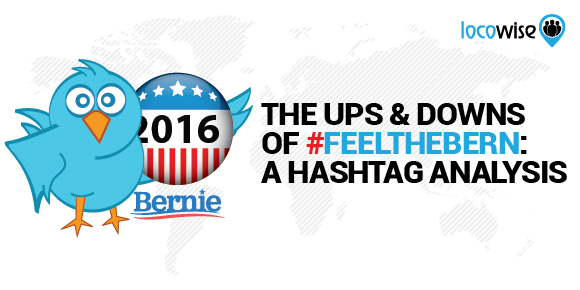Cold? Humourless? How To Create Relatable Social Media Content
Sahail Ashraf posted on 15 September 2016
If you put ten social media marketers or managers in a room right now and asked them what they wanted for Christmas, the answer would be ‘more engagement’. It’s the Holy Grail of social media marketing. And you can never get enough of it. Social media is about engagement, and unless it is a continual working process, where each post adds to engagement, the brand suffers.
Whichever way you look at it, though, engagement can be built into what you produce. A little effort and care means that you can create content that people relate to.
And if you create relatable content, that brings engagement as people click, share and talk about your stuff. It means something to them, and they can find themselves in what you do.

Getting to a position where your content is something people can relate to isn’t easy. It requires a real understanding of who your audience are, as people. Then, you need to focus on what kind of stuff drives them, piques their interest and compels them to find out more. So we would start with our first one here because it makes sense.
Getting to know your people
There is no better way to quickly find out what your audience is about then by checking out your metrics. See which posts are getting the most clicks and shares. The posts that people are viewing the most. These posts, this content, is the stuff that will tell you what your audience are like as people.
This allows you to get inside the mind and the motivations of your customers. What are they reading about? What do they want to read about and view? By doing this, you can relate to them more by simply giving them stuff they connect with. For example, a post about frustrations with a political issue can have massive resonance, if your audience regularly clicks on your stuff that has any kind of political relevance to it.
Make it human
Robots suck. Sure, automation of content is the way to go to some extent, but if you automate everything and forget to inject the human factor, your audience is going to flee.
So change this. Make sure that you focus on creating content that has as much of a human element as is possible. Make stuff that causes your audience to sit back and nod in recognition.
A funny meme about how it’s annoying when you get stuck in a traffic jam on the way to work will gain much more engagement than a list of facts about journey times. It’s a basic example, sure, but you get the point. Make it something that people recognise as being part of their lives. Not robotic.
Bring them your experience
If you’re a big brand, this is a little harder to implement, but stick with us for a second.
People like some kind of vulnerability in the social media content they take in. So if you are able to show an audience that you have some flaws, you can end up with some very relatable content.
This doesn’t have to mean that you confess to a crime or two, but by admitting that you have learnt something and then explaining what you have learnt, you show your flaws. Your vulnerability.
And it can go a long way. If your brand learnt that Twitter was not working out for you and you worked hard for six months to better the situation, create content around this. Highlight the awful tweets that gained zero engagement and get them out there. Then create a post about how you hired a consultant and she worked hard to get you guys back on track. Upload a couple of office photos that poke fun at the situation, with a ‘sad’ office before Twitter became good again and a ‘happy’ one when the bluebird was your friend once more.

More to the point, if you can teach your audience how you made improvements in any problem that you faced, that’s ‘being human’ right there. And guess what? That’s relatable.
Real life humour
Humour is often dismissed by serious types, and these serious types can even include your boss. But humour is always relatable because it is one of the few universal languages the world possesses. People like to laugh.
If you can create content on social media that is genuinely funny, go for it. But we know 99% of us can’t, so we suggest going out to find more of it. Funny tweets go a long way on Twitter, and most of them are simply curated. This means finding stuff that is funny and posting it now and then.
We say ‘now and then’ because too much of it will mean that your brand will lose credibility quickly. But every now and then is fine. And if you can take a look at your metrics to see what your audience is into, and then post funny stuff that resonates with this, even better.
And yes, this means that Lol Catz is still relevant.
#CharminAsks: Celebrity spotting in a public bathroom, ask for autograph…
— Charmin (@Charmin) September 9, 2016
Develop some context
Okay, this may not be that possible in a tweet (but it could be in a series of tweets). Creating content that develops a context for the audience is extremely powerful. Putting yourself in their shoes is great, but what can be even better is putting them in your shoes.
Try creating a little story in your content. If you sell a product, create content that relates a story to show your product can help. For example, if you create an email marketing product, wax lyrical about ‘that time’ you received zero opens on your email for six months. This will resonate with a brand that is struggling to gain engagement with its email. Make it vivid and include plenty of pain.
The office becoming a stressful place, targets not being met, sales being down. That sort of thing. Then talk about how to implement a few actions that changed everything. This builds a relatable element into your content because you’re telling them a compelling story that happens to be true.

Context is not easy to do in short-form content, but you could spice it up with photos and videos. You can build an entire block of content around that email problem, develop hashtags and so on. The more you do, and the more it is tied into your buyer personas, the more likely it will touch a nerve, and resonate.
Finally, make it visual
Visual content converts a lot more than the written word does. If you are able to create infographics or high quality video that is simple and straight to the point, you will have content that is easier to access. And easier to access means relatable.
A strong and meaningful video will have ten times more impact than a written piece of content. And visuals are much more common on social media these days than written content anyway.
Try it. Test it. Create visual content that is powerful and conveys a simple message that your audience can relate to (metrics again) and watch that engagement soar.
Relatable content is, like we said, not easy. You have to work at it. But once you’ve implemented some of the ideas above consistently, it will become less of a challenge. And the payoff in engagement is certainly sweet.





